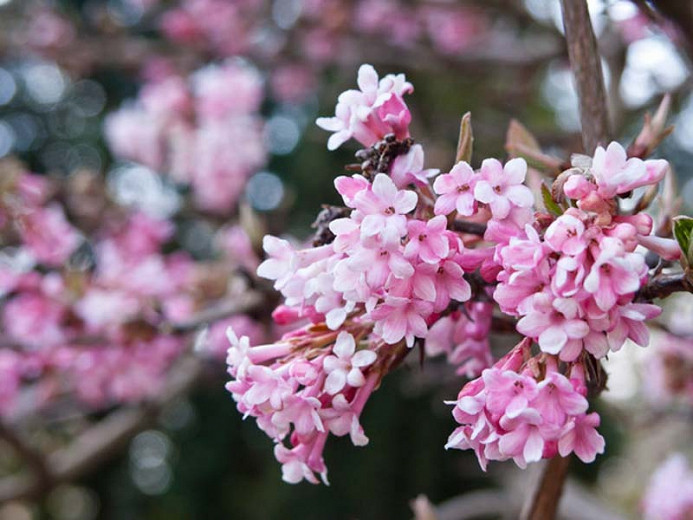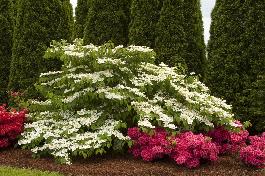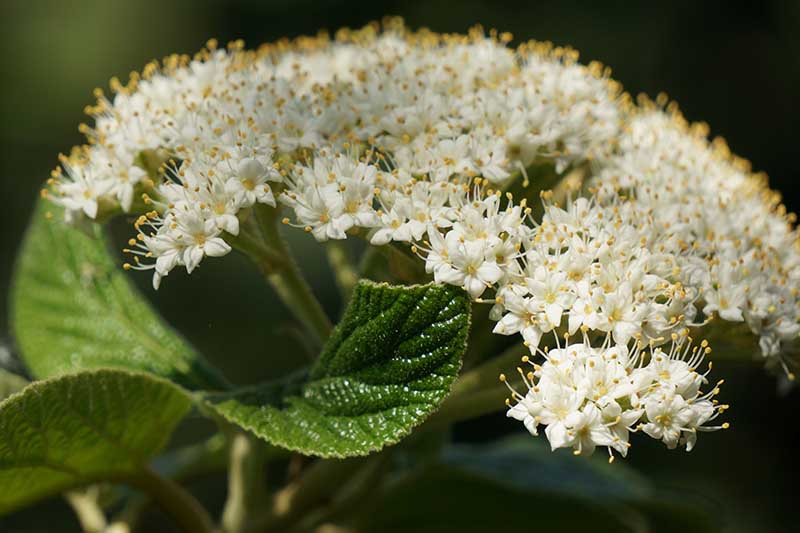Types Of Viburnum Shrubs For Every Garden
Viburnum shrubs are a diverse group of plants that offer a wide range of benefits for the home gardener. They are known for their beautiful flowers, attractive foliage, and edible berries. Viburnums are also relatively easy to care for, making them a good choice for even the most novice gardener.
In this blog post, we will explore the different types of viburnum shrubs and discuss their suitability for different gardening conditions. We will also provide tips on how to care for viburnums and how to use them in your landscape design.
Types of Viburnum Shrubs
There are over 200 species of viburnum shrubs, and they can be found in a wide range of sizes, shapes, and colors. Some of the most popular viburnum shrubs include:
- Burkwood viburnum (Viburnum x burkwoodii) is a small, deciduous shrub that produces clusters of fragrant white flowers in the spring. It is hardy in zones 5-9 and can grow up to 4 feet tall.

- Korean spice viburnum (Viburnum carlesii) is a small, deciduous shrub that produces clusters of pink or white flowers in the spring. It is hardy in zones 4-8 and can grow up to 6 feet tall.

- Dawn viburnum (Viburnum plicatum f. tomentosum 'Dawn') is a medium-sized, deciduous shrub that produces clusters of white flowers in the spring. It is hardy in zones 5-9 and can grow up to 10 feet tall.

- Doublefile viburnum (Viburnum plicatum f. tomentosum 'Mariesii') is a medium-sized, deciduous shrub that produces long, cascading clusters of white flowers in the spring. It is hardy in zones 5-9 and can grow up to 12 feet tall.

- Nannyberry viburnum (Viburnum lentago) is a large, deciduous shrub that produces clusters of white flowers in the spring. It is hardy in zones 4-9 and can grow up to 15 feet tall.
These are just a few of the many different types of viburnum shrubs available. When choosing a viburnum shrub for your garden, it is important to consider the size, shape, and color of the shrub, as well as its hardiness zone.
How to Care for Viburnum Shrubs
Viburnum shrubs are relatively easy to care for. They prefer full sun to partial shade and well-drained soil. Viburnums should be watered regularly, especially during hot, dry weather. They should also be fertilized once a year in the spring with a balanced fertilizer.
Viburnum shrubs are relatively pest- and disease-resistant. However, they may be susceptible to scale, aphids, and powdery mildew. If you notice any pests or diseases on your viburnum shrubs, you can treat them with an appropriate pesticide or fungicide.
How to Use Viburnum Shrubs in Your Landscape Design
Viburnum shrubs can be used in a variety of ways in your landscape design. They can be used as hedges, borders, or specimen plants. They can also be used to add color and interest to your garden in the spring and summer.
If you are looking for a viburnum shrub that will produce fragrant flowers, you may want to consider Burkwood viburnum, Korean spice viburnum, or Dawn viburnum. If you are looking for a viburnum shrub with attractive foliage, you may want to consider doublefile viburnum, Nannyberry viburnum, or Leatherleaf viburnum.
No matter what your gardening goals are, there is a viburnum shrub that is perfect for you. With so many different types of viburnum shrubs to choose from, you are sure to find the perfect one to add beauty and interest to your garden.
Viburnums are a diverse group of shrubs and trees that are known for their beautiful flowers, berries, and foliage. There are over 150 species of viburnum, each with its own unique characteristics. Some viburnums are known for their showy flowers, such as the snowball bush (Viburnum opulus) and the doublefile viburnum (Viburnum plicatum f. tomentosum). Others are prized for their fragrant flowers, such as the Koreanspice viburnum (Viburnum carlesii) and the fragrant snowball viburnum (Viburnum x bodnantense). And still others are grown for their colorful berries, such as the highbush cranberry (Viburnum opulus) and the arrowwood viburnum (Viburnum dentatum).
If you're interested in learning more about the different types of viburnum, I recommend visiting Garden Wiki. This website has a comprehensive directory of viburnum species, along with detailed information about each plant's appearance, growth habits, and care requirements. You can also find photos, videos, and articles about viburnums on this website.
FAQ of types of viburnum
- What are the different types of viburnum?
There are over 200 species of viburnum, which can be divided into two main groups: deciduous and evergreen. Deciduous viburnums lose their leaves in the fall, while evergreen viburnums retain their leaves year-round. Some of the most popular types of viburnum include:
* Viburnum opulus (snowball bush): This is a deciduous viburnum that produces large, white flowerheads in the spring.
* Viburnum carlesii (Koreanspice viburnum): This is a deciduous viburnum that has fragrant, white flowers in the spring.
* Viburnum davidii (Chinese snowball viburnum): This is an evergreen viburnum that produces white flowerheads in the spring.
* Viburnum dentatum (arrowwood viburnum): This is a deciduous viburnum that has flat-topped clusters of white flowers in the spring.
* Viburnum prunifolium (blackhaw viburnum): This is a deciduous viburnum that has white flowers in the spring and blue-black berries in the fall.
- What are the different colors of viburnum?
Viburnums can bloom in a variety of colors, including white, pink, purple, blue, and red. Some viburnums, such as Viburnum opulus, can even produce flowers in multiple colors. The color of the flowers will vary depending on the species of viburnum and the climate in which it is grown.
- What are the different sizes of viburnum?
Viburnums can range in size from small shrubs to large trees. Some of the smallest viburnums, such as Viburnum davidii, only grow to be a few feet tall. Other viburnums, such as Viburnum prunifolium, can grow to be 20 feet tall or more. When choosing a viburnum for your landscape, it is important to consider the size of the mature plant so that you choose one that will fit in the space you have available.
- What are the different hardiness zones of viburnum?
Viburnums can be found in a variety of hardiness zones, from USDA Zone 3 to Zone 9. When choosing a viburnum for your landscape, it is important to choose one that is hardy in your climate zone. Viburnums that are not hardy in your climate zone may not survive the winter.
- How do I care for viburnum?
Viburnums are relatively easy to care for. They need full sun to partial shade and well-drained soil. Viburnums should be watered regularly, especially during the first year after planting. They may need to be pruned in the spring to remove dead or damaged branches. Viburnums are relatively pest- and disease-resistant.
Image of types of viburnum
- Viburnum opulus, also known as snowball viburnum, is a deciduous shrub that produces large, white flower clusters in spring. It is native to Europe and Asia.
- Viburnum carlesii, also known as Koreanspice viburnum, is a deciduous shrub that produces small, white flower clusters in spring. It has a strong fragrance and reddish leaves in autumn. It is native to Korea and China.

- Viburnum dentatum, also known as arrowwood viburnum, is a deciduous shrub that produces flat-topped flower clusters in spring. It has bluish fruit and reddish leaves in autumn. It is native to North America.

- Viburnum trilobum, also known as American cranberrybush, is a deciduous shrub that produces white flower clusters in spring. It has red berries in summer and fall. It is native to North America.

- Viburnum suspensum, also known as leatherleaf viburnum, is an evergreen shrub that produces clusters of white flowers in spring. It has leathery leaves that turn red in fall. It is native to Japan and Korea.

Post a Comment for " Types Of Viburnum Shrubs For Every Garden"